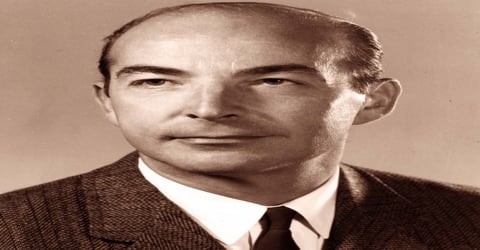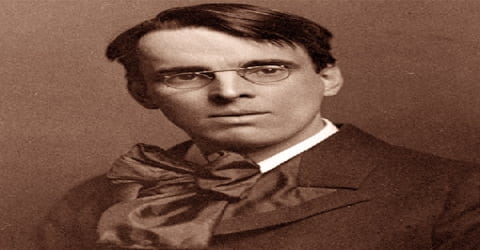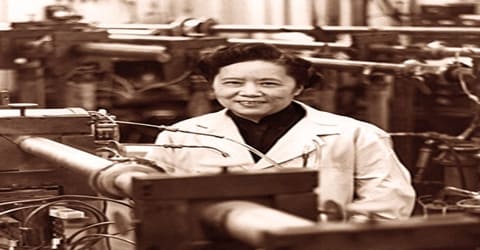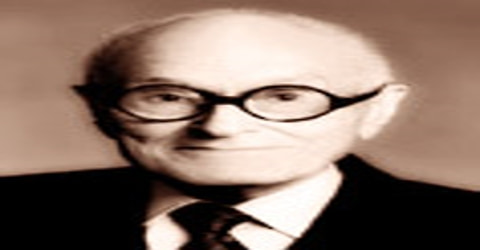Biography of Arthur Kornberg
Arthur Kornberg – American biochemist.
Name: Arthur Kornberg
Date of Birth: March 3, 1918
Place of Birth: New York City, New York, United States
Date of Death: October 26, 2007 (aged 89)
Place of Death: Palo Alto, United States
Occupation: Biochemist
Father: Joseph
Mother: Lena (Née Katz) Kornberg
Spouse/Ex: Sylvy Ruth Levy (m. 1943-1986), Charlene Walsh Levering (m. 1988-1995), Carolyn Frey Dixon (m. 1995-2007)
Children: Roger David Kornberg, Thomas B. Kornberg, and Kenneth Andrew Kornberg
Early Life
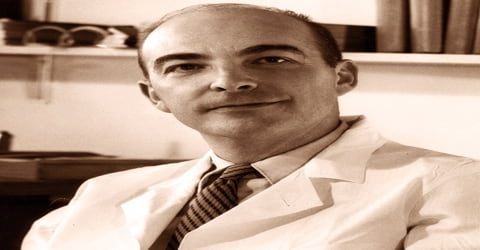
An American biochemist and physician who received (with Severo Ochoa) the 1959 Nobel Prize for Physiology or Medicine for discovering the means by which deoxyribonucleic acid (DNA) molecules are duplicated in the bacterial cell, as well as the means for reconstructing this duplication process in the test tube, Arthur Kornberg was born on March 3, 1918, in New York City, New York, U.S. to the son of Jewish parents Joseph and Lena (née Katz) Kornberg, who emigrated to New York from Austrian Galicia (now part of Poland) in 1900 before they were married. His parents, who came to the USA at the turn of the century from Austrian Galicia, were not-so-well-off traders.
Kornberg began his education at a public school and funded his college education with the help of scholarships. His initial aim was to become a doctor, but while studying for his medical degree, he began to take interest in research and started a survey to see if jaundice was common among medical students. The paper, which was published a year after he earned his MD, caught the attention of the Director of National Institutes of Health. On his invitation, Kornberg joined NIH and served there for eleven years; in-between he took breaks to update his knowledge on enzymes. His primary research interests were in biochemistry, especially enzyme chemistry, deoxyribonucleic acid synthesis (DNA replication) and studying the nucleic acids which control heredity in animals, plants, bacteria, and viruses. Later he began his teaching career as a professor at Washington University but continued with his research. Here he was able to isolate DNA polymerizing enzyme, which earned him the Nobel Prize three years later. Later he shifted to the University of Stanford and remained there for the rest of his life. He was also socially very aware and lent his name to relevant movements.
Kornberg has also awarded the Paul-Lewis Award in Enzyme Chemistry from the American Chemical Society in 1951, L.H.D. degree from Yeshiva University in 1962, as well as National Medal of Science in 1979.
Childhood, Family and Educational Life

An American biochemist, Arthur Kornberg was born on March 3, 1918, in Brooklyn, New York City. His parents, Joseph, and Lena (née Katz) Kornberg were Jewish emigrants from Austrian Galicia, now part of Poland. Arthur’s father, Joseph Kornberg, did not have any formal education but could speak at least six languages. In New York, he operated a sweet shop, but later as his health failed, he opened a hardware store. When Arthur turned nine, he began to lend a helping hand at the store.
Arthur Kornberg was educated first at Abraham Lincoln High School and then at City College in New York City. He received at B.Sc. in 1937, followed by an M.D. at the University of Rochester in 1941. Kornberg had a mildly elevated level of bilirubin in his blood jaundice due to a hereditary genetic condition known as Gilbert’s syndrome and, while at medical school, he took a survey of fellow students to discover how common the condition was. The results were published in Kornberg’s first research paper in 1942.
Kornberg suffered from a hereditary genetic condition called Gilbert syndrome and his blood contained a slightly higher level of bilirubin. It made him susceptible to jaundice. While studying at the medical school, he began to take a survey of his fellow students, trying to establish how common the syndrome was.
Personal Life
On November 21, 1943, Kornberg married Sylvy Ruth Levy, also a biochemist of note. She worked closely with Kornberg and contributed significantly to the discovery of DNA polymerase. Arthur and Sylvy Kornberg had three sons: Roger David Kornberg (1947), Thomas B. Kornberg (1948), and Kenneth Andrew Kornberg (1950). Sylvy Kornberg died in 1986.
Two years after the death of his first wife, Kornberg tied the knot for the second time and in 1988, married Charlene Walsh Levering, who also predeceased him in 1995. In December 1998, he married Carolyn Frey Dixon. They remained married till his death in 2007.
Career and Works
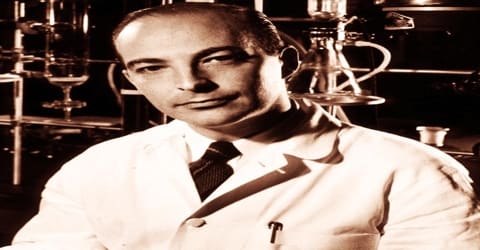
Arthur Kornberg’s internship was at Strong Memorial Hospital in Rochester, New York, between 1941-1942. After completing his medical training, he joined the armed services as a lieutenant in the United States Coast Guard, serving as a ship’s doctor in 1942. Rolla Dyer, the Director of National Institutes of Health, had noticed his paper and invited him to join the research team at the Nutrition Laboratory of the NIH. From 1942 to 1945, Kornberg’s work was the feeding of specialized diets to rats to discover new vitamins.
In 1942, Kornberg published the result of his above-mentioned survey. Titled, ‘The Occurrence of Jaundice in an Otherwise Normal Medical Student’, it caught the attention of Rolla Dyer, the Director of National Institute of Health, who invited him to join his research team at the Nutritional Laboratory. Kornberg took up this opportunity and joined National Institutes of Health in Bethesda, Maryland. Here he was assigned to the Nutrition Section of its Physiology Division. His job was to look for new vitamins by feeding rats with a specialized diet. He did not find that motivating. Instead, he developed an interest in enzymes.
At the U.S. National Institutes of Health, Bethesda, Md. (1942–53), Kornberg directed research on enzymes and intermediary metabolism. He also helped discover the chemical reactions in the cell that result in the construction of flavine adenine dinucleotide (FAD) and diphosphopyridine nucleotide (DPN), coenzymes that are important hydrogen-carrying intermediaries in biological oxidations and reductions.
In 1946, Kornberg got himself transferred to Dr. Severo Ochoa’s laboratory at New York University to learn more about enzyme purification techniques. Concurrently, he took summer courses at Columbia University to update his knowledge about organic and physical chemistry. Next, in 1947, Kornberg shifted to Washington University School of Medicine at St. Louis. Here he worked for a few months with Carl Ferdinand Cori before returning to NIH at Bethesda. At NIH, he was assigned to organize the Enzymes and Metabolism Section of the Physiology Division, which he did successfully. Subsequently, he became its Medical Director and served in this capacity until 1953.
Appointed professor and director of the microbiology department at Washington University, St. Louis, Mo. (1953-59), he continued to study the way in which living organisms manufacture nucleotides, which consist of a nitrogen-containing organic base linked to a five-carbon sugar ring ribose or deoxyribose linked to a phosphate group. Nucleotides are the building blocks for the giant nucleic acids DNA and RNA (ribonucleic acid, which is essential to the construction of cell proteins according to the specifications dictated by the “message” contained in DNA). This research led Kornberg directly to the problem of how nucleotides are strung together (polymerized) to form DNA molecules. Adding nucleotides “labeled” with radioactive isotopes to extracts prepared from cultures of the common intestinal bacterium Escherichia coli, he found (1956) evidence of an enzyme-catalyzed polymerization reaction. He isolated and purified an enzyme (now known as DNA polymerase) that in combination with certain nucleotide building blocks could produce precise replicas of short DNA molecules (known as primers) in a test tube.
In 1960 Kornberg received an LL.D. again from City College, followed by a D.Sc. at the University of Rochester in 1962. He became Professor and Executive Head of the Department of Biochemistry, Stanford University, in 1959. In an interview in 1997, Arthur Kornberg (referring to Josh Lederberg) said: “Lederberg really wanted to join my department. I knew him; he’s a genius, but he’d be unable to focus and to operate within a small family group like ours, and so, I was instrumental in establishing a department of genetics at Stanford of which he would be chairman.” From 1962 to 1970, in the midst of his work on DNA synthesis, Kornberg devoted half his research effort to determine how DNA is stored in the spore, what replication mechanisms are included, and how the spore generates a new cell. This was an unfashionable but complex area of science, and although some progress was made, eventually Kornberg abandoned this research.
At Stanford, Kornberg continued his research on DNA biosynthesis. In this project, he worked in close collaboration with Mehran Goulian. After years of grueling research, they finally announced their success on December 14, 1967. Along with his work on DNA synthesis, Kornberg also tried to find out how spores store DNA and generate new cells. Although he earned limited success, he eventually abandoned this project. Kornberg officially retired from his post in 1988. However, Kornberg had never ceased working and maintained an active research Laboratory at the University of Stanford until his death.

From 1991 onwards, Kornberg began to focus on the metabolism of inorganic polyphosphate, at that time, regarded as ‘molecular fossil’. Eventually, he found a variety of significant functions for it. For example, he found that it responds to stresses and stringencies; causes motility and virulence in some of the major pathogens. In addition to his research work, Kornberg pursued teaching career with equal enthusiasm. Many of his students later went on to become internationally famous scientists and earned established awards.
When Kornberg was in his eighties, he continued to conduct research full-time at the Department of Biochemistry at Stanford. Kornberg also published several papers. His books include‘Enzymatic Synthesis of DNA (1961); DNA Synthesis, (1974); ‘DNA Replication’, (1980); ‘For the Love of Enzymes: The Odyssey of a Biochemist’ (1989); DNA Replication (2nd Edition) with Tania A. Baker (1992) and ‘The Golden Helix: Inside Biotech Ventures’ (2002).
Awards and Honor
Arthur Kornberg had received Paul-Lewis Award in Enzyme Chemistry from American Chemical Society in 1951.
In 1959, Arthur Kornberg received the Nobel Prize for Physiology or Medicine for his “discovery of the mechanisms in the biological synthesis of ribonucleic acid and deoxyribonucleic acid”. He shared the prize with Dr Severo Ochoa, who had been working on the same topic at the New York University College of Medicine.
In 1968, Kornberg received the Scientific Achievement Award of the American Medical Association, the Lucy Wortham James Award of the Society of Medical Oncology and the Borden Award in the Medical Sciences of the Association of American Medical Colleges. In addition, he had received National Medal of Science in 1979, Cosmos Club Award and Gairdner Foundation Award in 1995.
The Arthur Kornberg Medical Research Building at the University of Rochester Medical Center was named in his honor in 1999.
Arthur Kornberg was also elected a Fellow of Royal Society. In addition, he was also a member of the National Academy of Sciences and American Philosophical Society. He received innumerable honorary degrees from many established institutions.
Death and Legacy
Arthur Kornberg, He died on October 26, 2007, at Stanford Hospital from respiratory failure. He was survived by his third wife Carolyn and three sons. Many of his children (his students and postdoctoral fellows) and grandchildren (their students) turned out to be intellectuals. Together, they are referred to as ‘The Kornberg’s School of Biochemistry’.
Arthur Kornberg is best remembered for his work on deoxyribonucleic acid (DNA) polymerase. In 1956, he identified DNA Polymerase I (or Pol I) in the intestinal bacterium E coli and recognized it as an essential enzyme for replication, repair, and rearrangements of DNA. He also showed how a single strand of DNA formed new strands of nucleotides and proved that DNA had a double helix structure, as theorized by earlier scientists. This discovery helped to start a biotechnology revolution, which had far-reaching consequences. Synthesis of artificial DNA, which was at the same time biologically active, was another of Kornberg’s major projects. The work not only helped in future studies of genetics but also helped to provide cures to hereditary diseases and control viral infections.
The “Kornberg school” of biochemistry refers to Arthur Kornberg’s many graduate students and post-doctoral fellows, i.e., his intellectual children, and the trainees of his trainees, i.e., his intellectual grandchildren. Kornberg’s intellectual children include I. Robert Lehman, Charles C. Richardson, Randy Schekman, William T. Wickner, James Rothman, Arturo Falaschi and Ken-ichi Arai.
Information Source:
